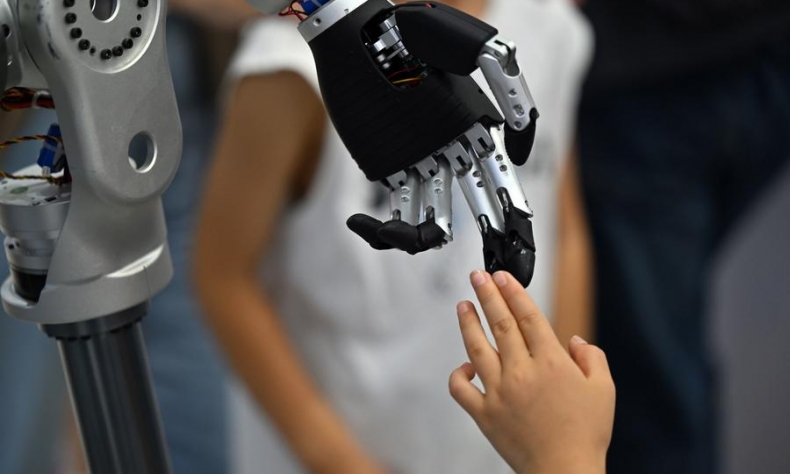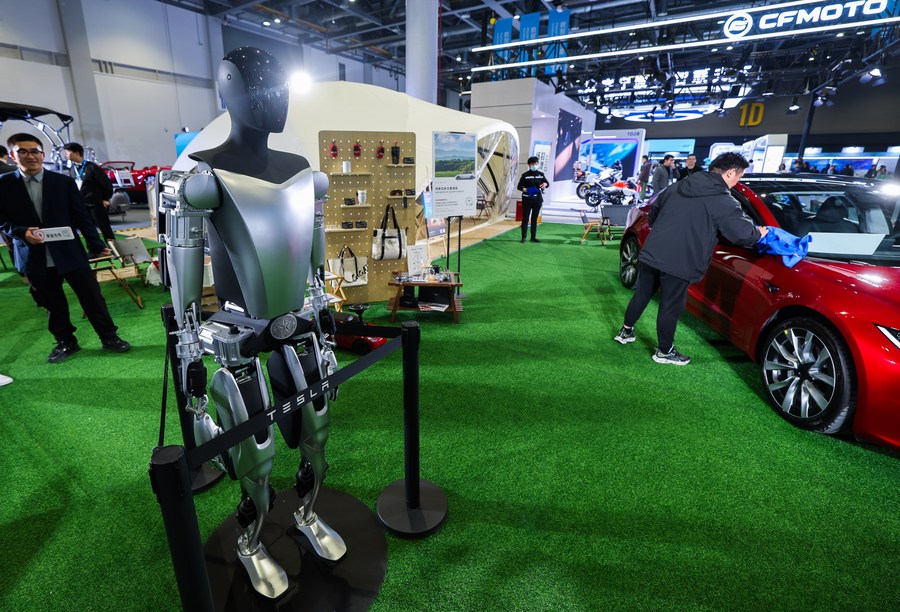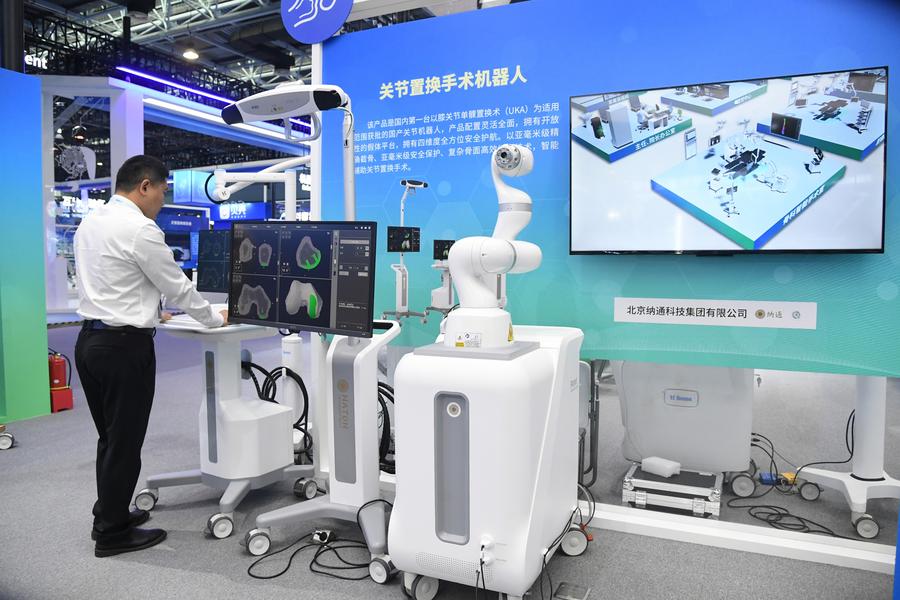Between Science and Conscience

Humanoid robots are at the heart of the smart technologies and industries of the future. However, they are still at an embryonic stage and face many challenges in terms of basic technologies, marketing and ethical oversight.
Humanoid robots have become a familiar sight, particularly in science fiction films where they are often depicted as omnipotent beings. They are capable of caring for our families in real time, offering emotional companionship and even protecting Earth on our behalf. Thanks to unprecedented technological advances on a global scale, some of these science fiction scenarios are beginning to become reality.
The Chinese Ministry of Industry and Information Technology published the Directive on the Innovative Development of Humanoid Robots at the end of 2023. This document identifies these robots as the next revolutionary product. They promise to profoundly transform the way we produce and live, succeeding the computer, the smartphone and the electric vehicle. This prospect opens up a boundless field of imagination for the future of these robots.
In February, an unusual “trainee” joined the electric vehicle assembly line at NIO, a Chinese manufacturer of new energy vehicles based in Hefei, east China’s Anhui Province. The trainee is a humanoid robot nicknamed Walker S developed by UBTECH. It has demonstrated great agility in tasks usually reserved for humans, such as quality testing of door locks and seat belts. According to Jiao Jichao, vice president of UBTECH, discussions are underway to introduce Walker S in other factories, with dozens of automotive companies interested in possible collaborations.
Over the past two years, revolutionary advances in generative artificial intelligence (AI) have considerably boosted the development of humanoid robots. In China, numerous start-ups have launched bipedal models, supported by local government schemes. The directive plans to create an innovative system by 2025 and aims to take the industry to a globally advanced level by 2027, making humanoid robots a new driver of economic growth.
A new start
Humanoid robots are not a recent phenomenon, having first appeared in the 1970s. However, their development has been held back by challenges such as high costs and marketing difficulties. It is only with the advent of generative AI that the field has seen a major turning point.
With the rapid development of advanced models such as ChatGPT, humanoid robots have incorporated an “intelligent core” representing embodied intelligence. This concept refers to the ability of intelligent systems or machines to interact with their physical environment in real time through perception and action.

In 2022, Tesla marked a significant milestone with the launch of its bipedal humanoid robot, Optimus, which is now operational in its factories. This initiative not only captured the attention of investors and the industry for the first time, but also served as a model for the sector. The following year, the generative AI revolution opened a new chapter, shifting the focus from motor capacity to the intelligence of humanoid robots.
According to Zou Jian, president and CEO of UBTECH, this sector promotes the joint development of various cutting-edge industries, such as mechanics, electronics, sensors, communication and artificial intelligence. Compared with traditional industrial robots, humanoid robots are more flexible and intelligent, capable of replacing humans in dull and monotonous jobs and effectively alleviating labour shortages.
Experts believe that 2024 will see the start of mass production of humanoid robots, which are currently in a crucial phase of transition from the laboratory to industrialisation. Several Chinese companies in the sector have already begun small-scale production and delivery, mainly to research institutes, AI companies and smart manufacturers.
According to a report by China Centre for Information Industry Development, China’s humanoid robot industry exploded in 2023, reaching the scale of 3.91 billion yuan ($547.4 million), an increase of 85.7 percent year on year. Growth is expected to continue in 2024 and 2025, with the projected size of the sector reaching 20 billion yuan ($2.76 billion) by 2026.
This rapid growth is driven by a wide range of applications, particularly in industrial manufacturing, commercial services and family support. For the latter two, large-scale commercialisation remains uncertain due to the increasing complexity of the environment and the diversified needs for human-machine interaction, said Zhou. However, with a solid foundation already in place, the field of intelligent manufacturing is benefitting from effective commercialisation.
As China’s ageing population raises long-term labour shortage issues and the need to free humans from repetitive and dangerous tasks becomes more pressing, the outlook is even more promising. Potential applications are expected to extend to sectors such as electronics, automotive, medicine, agriculture, logistics and domestic tasks.

Increased investment
Technological advances are crucial to the development of applications, especially in the software field. Wang Xingxing, founder of Unitree, a robotics start-up based in Hangzhou, Zhejiang Province, explained that a humanoid robot consists of two main parts: software and hardware. The software, which is the most complex part, includes various artificial intelligence models, such as large language models and diffusion models for image generation. The hardware, on the other hand, includes the standard components used in building robots, such as controllers and sensors. Humanoid robots are flexible, with more than 40 articulations, compared to the two to 10 of traditional robots.
At the CloudMinds factory in Shanghai, a joint for a humanoid robot can be automatically assembled in as little as 30 seconds. “Thanks to intelligent technologies such as 5G + Industrial Internet and digital twins, the factory can simultaneously produce about 10 different models of joints, with a maximum designed annual capacity of 1 million units,” said Zhang Lei, the factory’s manager. This kind of production reduces the barriers to entry in the industry.
Large and emerging companies such as Huawei, Xiaomi, Tencent and Xpeng Motors are stepping up investment in the sector. According to a report by Insight and Info, China’s humanoid robot industry has registered 142 investment events in 2023, totalling more than 80 billion yuan ($11 billion).
Another report, presented at the first China Humanoid Robot Industry Conference in Beijing in April, predicts that China’s humanoid robot market will reach 2.76 billion yuan ($389 million) by 2024, with the potential to grow to 100 billion yuan ($13.8 billion) by 2030.
Humanoid robots are at the heart of the smart technologies and industries of the future. However, they are still at an embryonic stage and face many challenges in terms of basic technologies, marketing and ethical oversight. Mass production raises issues such as manufacturing costs, supply chain stability and the integration of different technologies – systemic challenges that require the collaboration of multiple industry players, according to Liang Liang, deputy secretary general of the Chinese Institute of Electronics. He stresses the need for consensus and a holistic approach to the development of humanoid robots.
 Facebook
Facebook
 Twitter
Twitter
 Linkedin
Linkedin
 Google +
Google +










